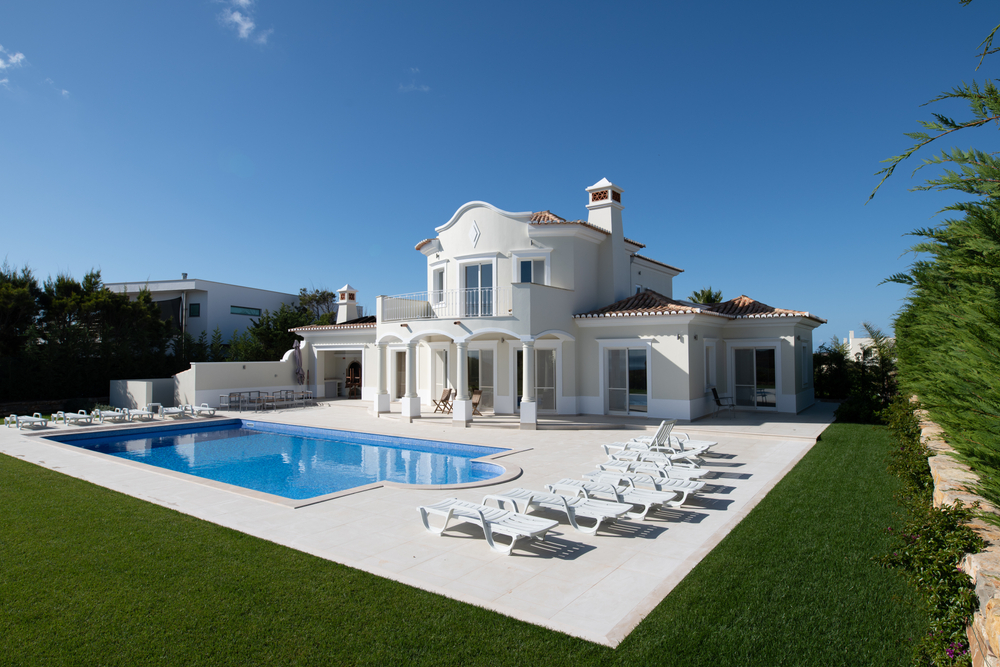Attempting to get a mortgage in Spain when you are a non-resident and do not speak the language can be a daunting process, knowing which banks to approach, what terms you should expect and all the products available to you. Many of the lenders we work with are not based within Spain so may not even appear as clients begin to research themselves.
Whether you are purchasing your holiday home in Ibiza, refinancing a villa in Marbella or buying an investment property in Barcelona, we can assist our clients to get the best terms in the quickest and most efficient way.
Private Bank Mortgages in Spain
Private bank mortgages are an ideal solution for HNW individuals seeking bespoke financing. These banks offer more than just lending, they aim to manage your wealth holistically through Assets Under Management (AUM.) As a return, you will receive a mortgage as a client of theirs. The AUM could be cash that the bank invests on your behalf or your existing portfolio of stocks, shares or bonds that are simply transferred for the bank to manage.
Key Features:
- Minimum loan amount: €1 million
- Minimum AUM: €1 million (typically 25–50% of loan value)
- Interest rates: Typically structured as Euribor + margin (currently 1.3% - 2.3%)
- Loan-to-value (LTV): Up to 75% for second homes, up to 100% with higher AUM and structuring
However, it is important to note that this is all dependant on the specific product and circumstances.
Get in the Know
Subscribe to our newsletter
Euribor + margin has been on a downward trend and is expected to continue declining, which is great news for buyers looking to secure competitive mortgage rates. Several factors influence the margins lenders apply, such as the property location and value. Prime locations typically offer more attractive margins, and higher-value properties can often secure lower margins as well.
In addition, the nationality and residency status of the borrower play a role. Non-residents or nationals outside the UK/EU may face more paperwork, which can sometimes result in slightly higher pricing. On the other hand, individuals with higher net wealth spread across multiple asset classes are seen as lower-risk borrowers, which can lead to more favourable terms. Additionally, if you’re able to place a larger amount of Assets Under Management (AUM) with the bank, you can usually secure a lower margin.
At Enness, our longstanding relationships with private banks across Europe enable us to negotiate the best possible terms, ensuring our clients get the most competitive deals available.
Loan-to-Value (LTV) for a second home is usually a maximum of 75%, whilst a main residence can reach up to 90% LTV or even up to 100% LTV, with more AUM and a specific structure agreed with the bank.
A traditional structure of a private bank mortgage is:
- Purchase Price: Minimum €2,000,000
- Loan Amount: Minimum €1,000,000
- Assets Under Management: Minimum €1,000,000
Private bank mortgages are particularly well-suited for HNW clients seeking more flexibility and personalised financial solutions. These aren’t just traditional loans, they often come as part of a broader wealth management service. Many private banks provide tailored investment strategies alongside mortgage advice and offer interest-only options that help clients preserve liquidity for other investment opportunities.
HNW clients often choose private banking for several strategic reasons:
- They prefer to use leverage as a tool to preserve liquidity and grow their investment portfolios.
- Their income may come from multiple or non-traditional sources, requiring a lender who understands more complex financial structures.
- Many retain earnings within their company and draw a customised salary, which can confuse traditional lenders.
- Some, like property developers, have highly variable annual income, earning millions one year and none the next.
- Certain borrowers use debt to their advantage, such as opting for 100% loan-to-value (LTV) mortgages to offset property-related taxes in Spain.
- Others may be invested in a single equity and awaiting a significant liquidity event.
Private banks are uniquely positioned to understand and accommodate these types of financial profiles. Unlike traditional Spanish high street banks, which often take a more rigid and risk-averse approach, private banks offer tailored lending solutions and a much higher level of service for clients with more complex financial needs.
Case Study: €10 Million Equity Release on Spanish Property Portfolio
Enness arranged a €10 million refinancing for a client holding prime real estate in Spain. The challenge was that the client required high LTV for reinvestment purposes. Through our private banking relationships, we secured a 60% LTV and €3 million AUM, lower than the market norm. When the client improved property value through renovations, the lender topped up the facility without requiring a refinance.
Result: A flexible, high-LTV structure tailored to the client's goals and assets.
To learn more about this case study, click here.
Dry Lending in Spain
Dry lending refers to a traditional mortgage structure where no assets under management (AUM) are required to be placed with the bank. This is often referred to as retail banking or retail mortgages.
For non-residents, dry lending rates in Spain start from around 2% per annum, typically fixed for the duration of the term. These rates are often seen as very competitive, particularly when compared to what clients from the UK or US might be accustomed to.
Several factors can influence the mortgage rate:
- Property usage – Main residences or properties used personally may qualify for lower rates compared to rental or investment properties.
- Client nationality and residency – Spanish retail banks may have restrictions based on the applicant’s nationality or residency status.
- Income structure and debt-to-income ratio – Banks often apply strict criteria here. They may not consider retained business profits and will closely examine both monthly and annual financial commitments.
Terms typically range from 7 to 25 years, with a maximum lending age of 70. Loan-to-value (LTV) can reach up to 80%, and loans are usually amortising, meaning monthly repayments include both capital and interest.
Equity Release / Capital Raise
It is possible to raise capital or release equity through Spanish retail banks; however, the use of funds is tightly regulated. For example, the funds must be reinvested in residential property within Spain, such as purchasing another home or renovating an existing one. Banks will monitor the use of funds post-drawdown, and rates for these loans may be slightly higher than standard dry lending rates.
Who is Dry Lending Suitable For?
This product is typically best suited for clients with straightforward financial profiles, those with minimal income sources, low debt-to-income ratios, and strong income levels.
Development Loans in Spain
We also help arrange development finance for projects ranging from light refurbishments, such as a new kitchen or bathroom, to major developments, including ground-up builds or the conversion of large properties into multiple units.
Terms are comparable to bridging loans, typically offering up to 75% loan-to-cost or 55% of loan-to-GDV, with rates starting from 1% per month.
Lenders require:
- A full business plan
- Approved building permits
- A detailed schedule of works and build cost breakdown
Throughout the loan term, clients must demonstrate how funds are allocated and used.
Bridging Loans in Spain
Bridging loans offer a short-term solution for clients needing fast liquidity, whether to bridge a delay in funds or to finance a property short-term. The maximum LTV is usually 60 - 65%, depending on the property's type and location.
Our lenders typically have a minimum loan amount of €1 million and prefer prime, single-unit residential properties over commercial assets like hotels or multi-unit blocks.
Important structural consideration: Due to Spanish Banking Monopoly Laws, most lenders cannot lend to individuals directly. Thus, properties must generally be held in a Spanish SL (Sociedad Limitada) or a similar corporate structure. We work closely with clients, lenders, and legal/tax advisers to ensure the correct setup.
Current bridging rates in Spain are around 1% - 1.2% per month, with interest often retained within the loan.
Turnaround Time: One of the key advantages is speed, while a traditional mortgage may take 3-6 months to complete, bridging loans can be arranged and drawn down in as little as two weeks, assuming the structure and documentation are ready.
Who Is a Bridging Loan For?
The most common use case is HNW individuals who are in the process of selling one holiday home to purchase another and need liquidity before their sale completes. These loans are often repaid shortly after, with no early repayment charges beyond the first three months.
We also assist property developers who need short-term refinancing at the end of a project while waiting for sales to complete. A bridging loan provides interim funding during this transition period.
Why Choose Enness?
At Enness, we are experts in high-value, international, and non-resident mortgages. Our clients value the fast turnaround from enquiry to mortgage drawdown as well as our deep knowledge and expertise of the Spanish lending market. We have strong relationships with top private and retail banks across Europe, ensuring we deliver a discreet and seamless service. Contact us today to speak with one of our specialists to discuss your goals.
The views and opinions expressed in this piece are those of the author and do not constitute advice or a recommendation. They do not necessarily reflect the official policy or position of Enness and are not intended to indicate any market or industry viewpoints, or those of other industry professionals.





